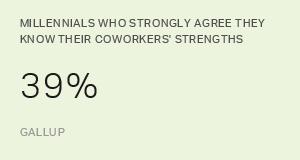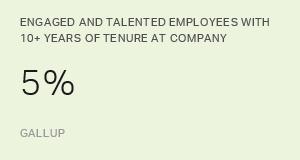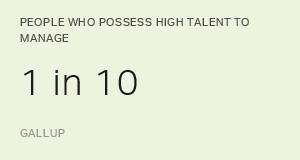Everybody loves working for Gary.
He's been a manager at the same manufacturing company for 20 years. He knows every detail about his employees' lives -- from their favorite teams to their kids' names.
He delivers honest, unflinching feedback that makes people carefully examine their performance. And he makes people laugh -- often in the same conversation.
Gary has coached and mentored every person on his team for decades. Without a doubt, many of his coworkers have stayed at the company because they love having Gary as their leader.
This year Gary decided to retire, and the site leadership thinks they have the perfect person to fill his role: Shanna. She is a conscientious, methodical and an extremely reliable supervisor. Shanna's team has been the plant's top performers since she arrived five years ago, and she has developed many cost-saving and safety-improving initiatives. Site leaders are eager to promote Shanna to expand her leadership skills and keep her engaged.
There's just one problem: Shanna is nothing like Gary. They have completely different leadership styles, personalities and -- although nobody says it out loud -- Shanna is 30 years younger than Gary. What's going to happen when millennial Shanna gets thrown in with a team of baby boomer "lifers" with more experience and longer tenures? Honestly, even Gary was secretly skeptical.
Getting Honest About New Generations in Management
Gary's and Shanna's situation is increasingly common in workplaces today as the baby boomer generation retires and Gen Xers and millennials take on more supervisory and leadership roles. Traditional organizations that worked desperately to attract millennials are now having to navigate an intergenerational workplace.
Millennials make up 38% of the workforce, and that percentage is only increasing. But as millennials enter management roles, only 39% strongly agree that they know the strengths of the people they work with regularly, which is lower than all other generations.
A major component of managing changes in leadership is easing individuals' anxieties and worries. Strengths-based education and dialogue are valuable tools for doing this:
- CliftonStrengths focuses on future potential. When people think about their strengths, they focus less on how things could go wrong and more on how they can make things go right.
- CliftonStrengths is universal. All people -- regardless of generation -- have talents that contribute to their team's success. A strengths-based approach shifts the conversation from "us vs. them" differences, stereotypes and biases.
- CliftonStrengths is personal. In times of change, people want to know that somebody is paying attention to them personally. Having strengths-based conversations lets each person know that they are seen and respected as an individual and a contributor.
- Strengths-based conversations focus on the positive. Having conversations about CliftonStrengths help individuals think more about why differences are good rather than bad.
Not Bad, Just Different Strengths
When Gary's team filed into the conference room, the skepticism was obvious. Here were Gary, Shanna and Joan from site leadership who were going to tell everybody to "get along and give Shanna a chance."
Joan began by talking about Gary's top CliftonStrengths themes: Woo, Significance, Restorative, Relator and Maximizer. She asked the team to talk about how Gary used his strengths in his management role. Everyone shared what made Gary so beloved and irreplaceable. It was clear that this recognition meant a lot to Gary.
Next, Joan presented Gary's bottom CliftonStrengths themes: Achiever, Adaptability, Arranger, Command and Competition. She asked everyone to talk about Gary's bottom themes. With a lot of good-natured laughs, most of the team agreed that these areas of lesser talent were "no big deal" because Gary was good at so much else.
Finally, Joan brought up Shanna's top CliftonStrengths themes: Consistency, Relator, Discipline, Achiever and Restorative. Joan asked Shanna in what areas she used her strengths as a manager. To everyone's surprise, Shanna had two of the same top strengths as Gary -- they just showed up a little differently.
One team member mentioned that he had the same strengths as Shanna. Another said that she had some of Gary's other strengths and could help out if Shanna needed it. Soon people were sharing their strengths and letting Shanna know how they worked best.
By the end of the meeting, the team was buzzing with anticipation. The question on everyone's mind had shifted from, "What does Shanna lack?" to "What is Shanna amazing at, and how can we best work with her?"
The facts of the situation had not changed: Shanna wasn't Gary. She would never be Gary. But Shanna had unique talents too. The team didn't need another Gary to survive. In fact, Shanna might be just the person the team needed to solve some of its most intractable problems.
Joan noticed by the end of the meeting that Gary was beaming.
"I'm just so glad to see that the team I built is going to do just fine without me," said Gary afterward. "Shanna is going to be great."
Gallup can help you bring the power of CliftonStrengths to your organization:
- Learn how CliftonStrengths solutions for managers can help you maximize your team's potential.
- See how one organization uses CliftonStrengths to boost employee engagement and slash turnover.
- Watch this free, on-demand briefing to learn how to build a strengths-based culture.
- Download our exclusive CliftonStrengths Meta-Analysis research to understand the powerful connections between employee strengths development and business performance.



